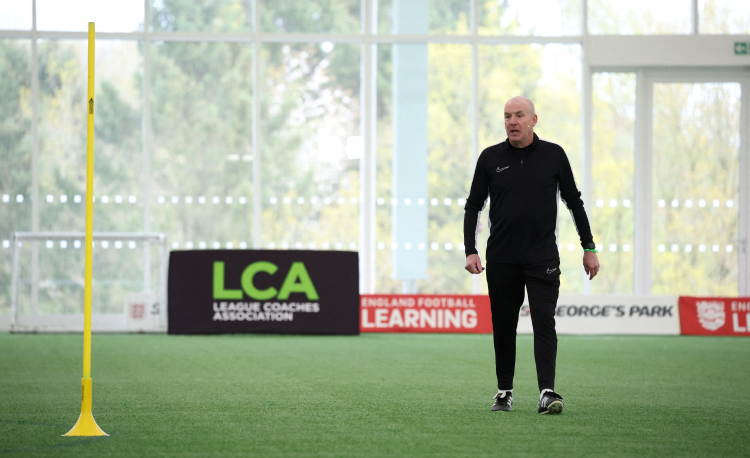You are viewing 1 of your 1 free articles
Defending set plays
A high percentage of goals are scored from set plays. For that reason, it is vitally important to create a skill set in players which maximises set play defence.
| Area | Up to 54x36 yards |
| Equipment | Balls, cones, goals |
| No. of Players | 18 plus keeper |
| Session Time | Main session 15mins, game 15mins |
A high percentage of goals are scored from set plays. For that reason, it is vitally important to create a skill set in players which maximises set play defence.
It’s important to practise this so that players have a firm steer on following play, coping with movement, affecting an opponent, winning the ball, avoiding blocks and using quick reactions.
If well organised, it is my belief that a defence can cope with any type of set play. For instance, against Hartlepool United on September 18, we kept a clean sheet despite our defence having a significant height disadvantage against their strike force.
What do I get the players to do?
Set up with three teams of six, positioned in and around the penalty box. One team defends, one team attacks and the other acts as servers, as shown.
We call each server sequentially – from left and right sides the deliveries replicate a corner, a wide free-kick or a central free-kick. The ball into the box is contested by the attackers and defenders to see which team can win the duel. The ball remains alive until it goes into the goal or leaves the area.
Each team attacks and defends 18 balls – three per server. Once 18 balls have been served, teams rotate their positions.
What are the key things to look out for?
The emphasis here is on how to defend set plays, and there are a number of different elements we look out for. These include an absolute focus on close man-to-man marking, whereby attackers jostling for position and space must be well marshaled (1). Defenders must also ensure they stay goal side for every delivery (2), as well as having a good appreciation of attacker movement. This includes knowing how to affect an opponent – through blocking, going shoulder to shoulder and holding the line (3) – as well as being ready to intercept incoming balls (4).
1
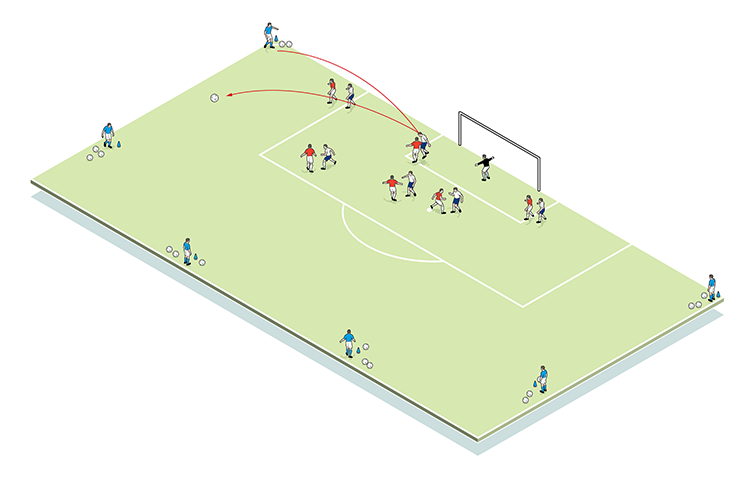
2
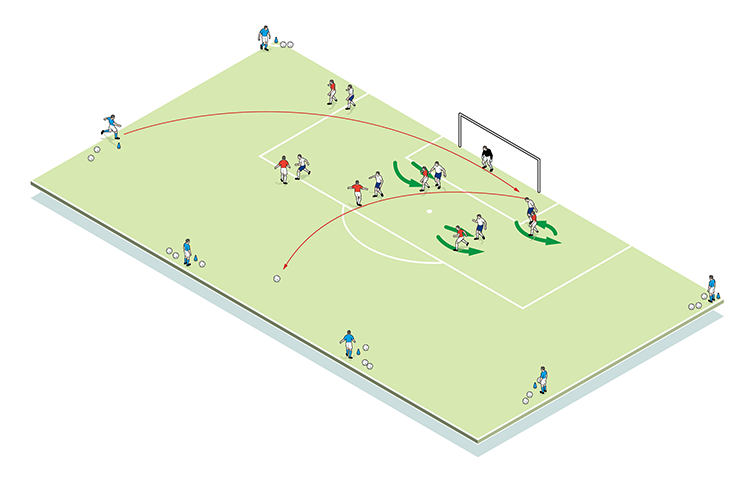
3
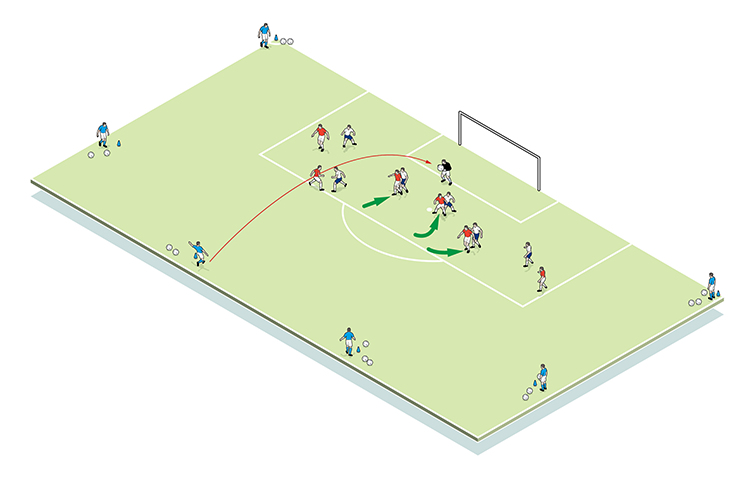
4
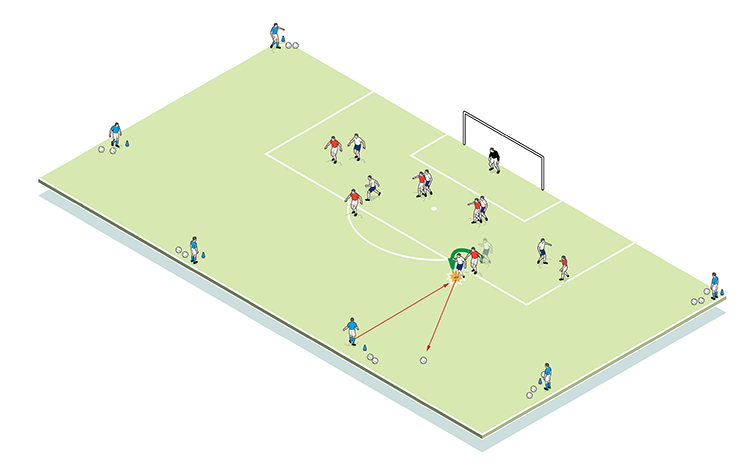
Knowing when to avoid blocks (where attackers link up to confuse the organisation of the defence) is also essential (5), with good communication allowing defenders to ‘pass on’ attackers.
5
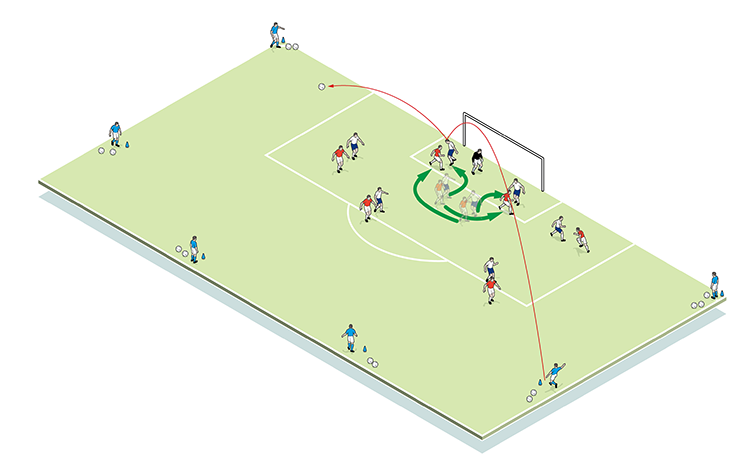
Overall, defenders must show quick reactions, be organised, switched on, and with an absolute focus on winning the ball whilst denying an opponent a goalscoring opportunity.
How do I put this into a small-sided game?
For an 8v8 game situation, we put two penalty boxes together, adding a 5-yard zone to the left and right where two neutral players wait. It’s a set 4v4 in each half (6). The keeper must roll the ball to one of his defenders before it is sent wide, with any goal needing to come from the wide ball in. The game creates live and fast-paced opportunities to practise set play scenarios.
6
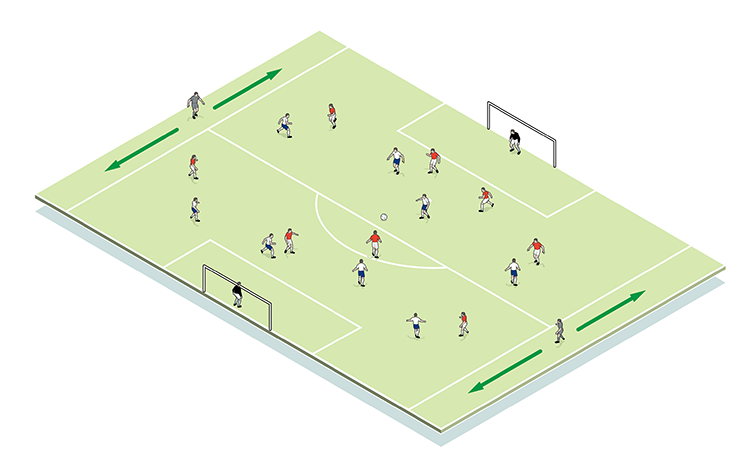
Related Files
Editor's Picks
Using the goalkeeper in build-up play
Pressing principles
Intensive boxes drill with goals
Penetrating the final third
Creating and finishing
My philosophy
Pressing initiation
Compact team movement
Defensive organisation
Coaches' Testimonials

Alan Pardew

Arsène Wenger

Brendan Rodgers

Carlos Carvalhal

José Mourinho

Jürgen Klopp

Pep Guardiola

Roy Hodgson

Sir Alex Ferguson

Steven Gerrard
Related
Principles in possession
Counter-attacking
Counter-attacking on transitions
Coaches' Testimonials

Gerald Kearney, Downtown Las Vegas Soccer Club

Paul Butler, Florida, USA

Rick Shields, Springboro, USA

Tony Green, Pierrefonds Titans, Quebec, Canada
Join the world's leading coaches and managers and discover for yourself one of the best kept secrets in coaching. No other training tool on the planet is written or read by the calibre of names you’ll find in Elite Soccer.
In a recent survey 92% of subscribers said Elite Soccer makes them more confident, 89% said it makes them a more effective coach and 91% said it makes them more inspired.
Get Monthly Inspiration
All the latest techniques and approaches
Since 2010 Elite Soccer has given subscribers exclusive insight into the training ground practices of the world’s best coaches. Published in partnership with the League Managers Association we have unparalleled access to the leading lights in the English leagues, as well as a host of international managers.
Elite Soccer exclusively features sessions written by the coaches themselves. There are no observed sessions and no sessions “in the style of”, just first-hand advice delivered direct to you from the coach.





